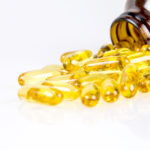Shining a light on the SPF gap: Why sun protection is so important for children of color

With summer just around the corner, it’s important to understand the risks that come along with those long, hot days in the sun. It’s also important to recognize some pretty dangerous misconceptions about sun protection — namely that Black children and other children of color don’t need to worry about skin protection and skin cancers. This includes children of Asian, Latino, Mediterranean, Middle Eastern, and Native American descent.
Here, Dr. Jen Huang, section chief of the Dermatology Program at Boston Children’s Hospital, explains how to protect kids of all skin tones from the harmful effects of the sun.
Missing the mark on sun marks
Everyone has the same number of melanocytes (the cells that make skin’s pigment) regardless of their skin color. What differs is the amount of melanin these cells make: Those with lighter skin produce less melanin, and those with darker skin more.
Melanin provides some natural defense from the sun’s ultraviolet rays but not complete protection, which is why Dr. Huang advises families not to have a false sense of immunity from sun damage.
“Skin cancer can happen to anybody and everybody,” she says.
Types of skin cancer include basal cell carcinoma, squamous cell carcinoma, and melanoma. For people of color, these cancers tend to be diagnosed late, making them harder to treat. Late diagnoses may be partly due to the misconception that skin cancer doesn’t happen in people with darker skin tones. This misconception can lead to missed opportunities for skin checks or dermatology referrals.
Unsung dangers
“We traditionally think of the sun as bad because it causes skin cancer and wrinkles,” Dr. Huang says. “But there are other effects that dermatologists think about.”
One such effect is post-inflammatory hyperpigmentation (PIH). PIH is when the skin darkens after being irritated or injured, such as with acne, eczema, bug bites, or cuts. Sun exposure can cause this discoloration to become more noticeable and last longer. PIH is more common in people of color and can negatively impact their self-esteem.
Other conditions dermatologists worry about include lupus and dermatomyositis, an inflammatory disease marked by muscle weakness and a skin rash. Lupus and dermatomyositis are photosensitive autoimmune disorders, meaning that the sun can trigger symptoms, especially in the skin.
Best practices for sun protection
If a patient asks me if they really have to wear sunscreen, the answer is always yes.
– Jen Huang, MD
The threats of excessive sun exposure are real and universal, but so are the steps families can take to protect themselves.
Dr. Huang says safe sun practices are the same for everyone:
Watch the clock
The sun is strongest between 10 a.m. and 4 p.m., so Dr. Huang encourages families to be mindful of how much time they spend outside during these hours.
If your family is going to spend a long period of time in the sun — such as a day at the beach — Dr. Huang recommends starting early in the morning and taking a break during lunchtime, or start later in the afternoon.”
Cover up
“Not enough emphasis can be made on the clothing you wear when it comes to sun protection,” says Dr. Huang. She encourages lightweight, long-sleeve shirts and long pants, sunglasses, and wide-brimmed hats that protect their ears and the back of the neck.
She also encourages looking for swimwear and clothing that list their UPF (Ultraviolet Protection Factor) rating. UPF indicates how much UV radiation the fabric allows to reach the skin. For example, a UPF rating of 30 means the material allows 1/30th (about 3 percent) of UV radiation. Any fabric with a rating below 15 is not considered UV-protective.
Sunscreen – for everyone
“If a patient asks me if they really have to wear sunscreen, the answer is always yes,” Dr. Huang says”
Given the number of sunscreen options, she offers some tips to help cut through the confusion:
Opt for sunscreens with zinc oxide or titanium dioxide as their active ingredient; they are most often labeled as mineral sunscreens (sometimes called physical blockers). Physical blockers sit on top of the skin to physically “block” UV rays. They can safely and effectively protect from a broad spectrum of ultraviolet rays, including both UVB and UVA rays. Their alternative — chemical sunscreens — “absorb” UV rays through a chemical reaction that changes UV rays into heat which is then released from the skin. Some chemical sunscreens protect against UVB rays and others against UVA rays. Since a sunscreen’s SPF level only indicates the level of protection against UVB rays, it’s harder to find a chemical sunscreen product that provides full coverage. However, regardless of which formula you choose, reapplying every 60 to 90 minutes is essential.
Dr. Huang also emphasizes that bigger isn’t necessarily better — whether it’s a sunscreen’s SPF level or its price. An SPF of 30 or above provides adequate sun protection and most sunscreens are formulated from the same collection of ingredients, so a higher SPF doesn’t mean better coverage, and a higher cost doesn’t necessarily mean better ingredients.
The bright side
Despite the very real dangers of getting too much sun, controlled exposure to sunlight has real benefits on things such as mood, vitamin D levels, and some medical conditions.
“Sun isn’t all bad!” Dr. Huang says. “You just have to manage it.”
Learn more about the Dermatology Program or make an appointment.
Related Posts :
-

A Juneteenth celebration of children’s books featuring Black characters
Books can provide a mirror for kids to understand themselves and a window into the world around them. Yet for ...
-

Celebrating remarkable Asian Americans and Pacific Islanders
Boston Children’s Hospital thrives, thanks in part to the contributions of its Asian American and Pacific Islander staff and ...
-

Addressing racial and ethnic health disparities within primary care
The COVID-19 pandemic has led to increased awareness of existing racial and ethnic health disparities and inequities. The team at ...
-

Vitamin D: Absorption matters
If you’ve been hearing more about vitamin D recently, that’s because a growing number of studies have linked ...





